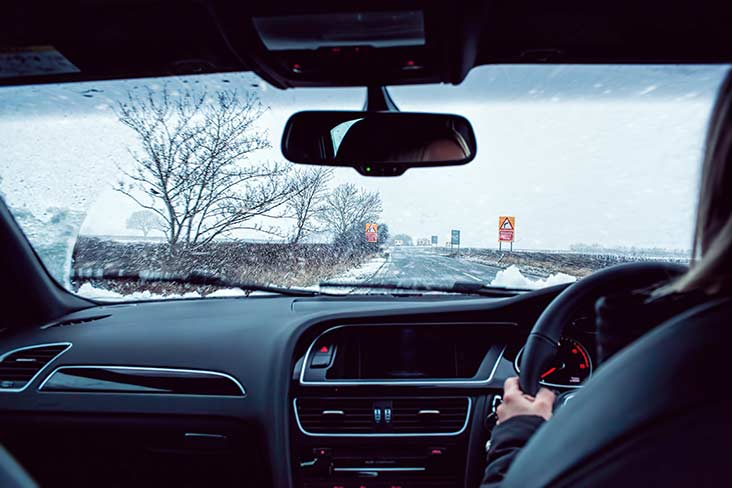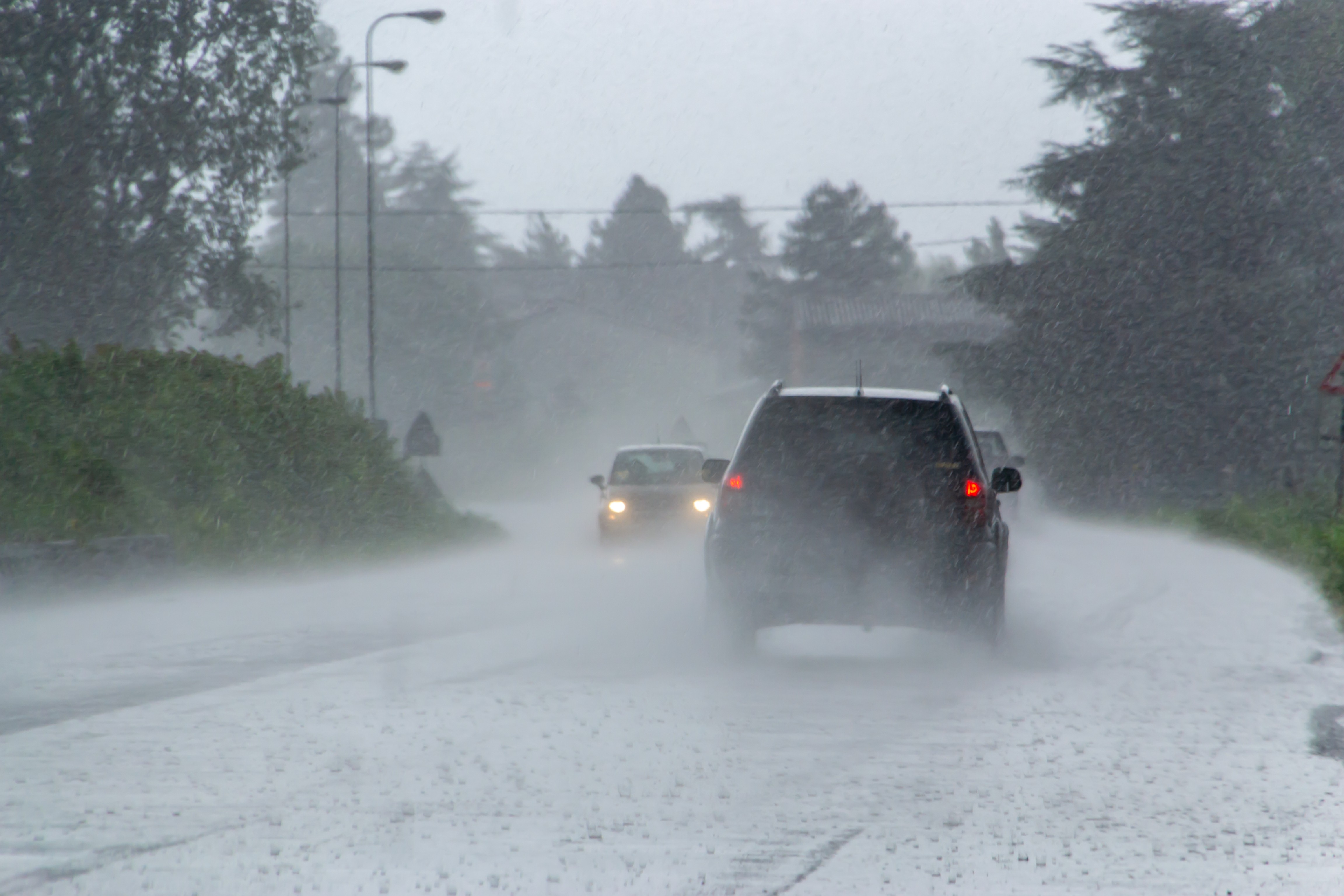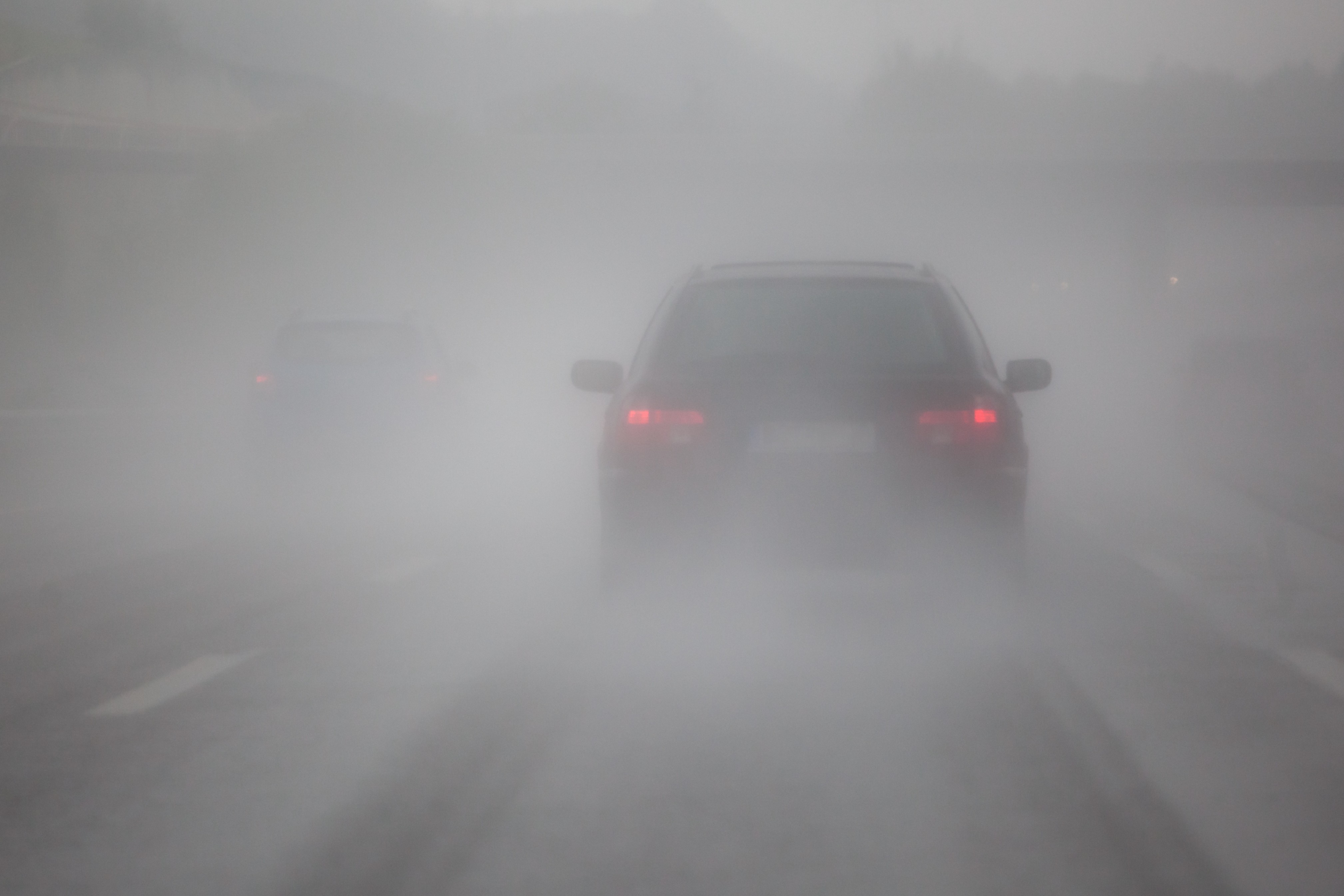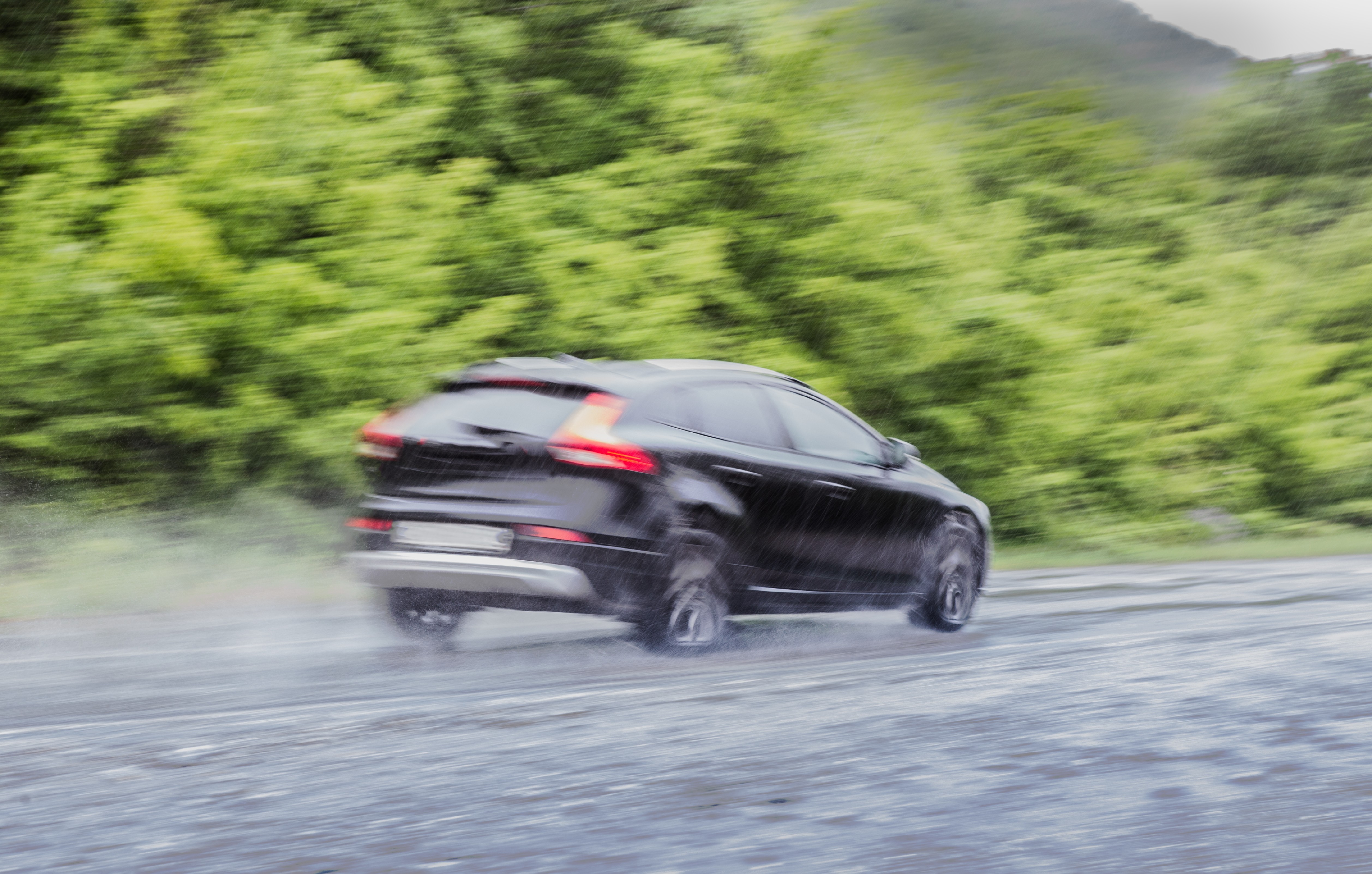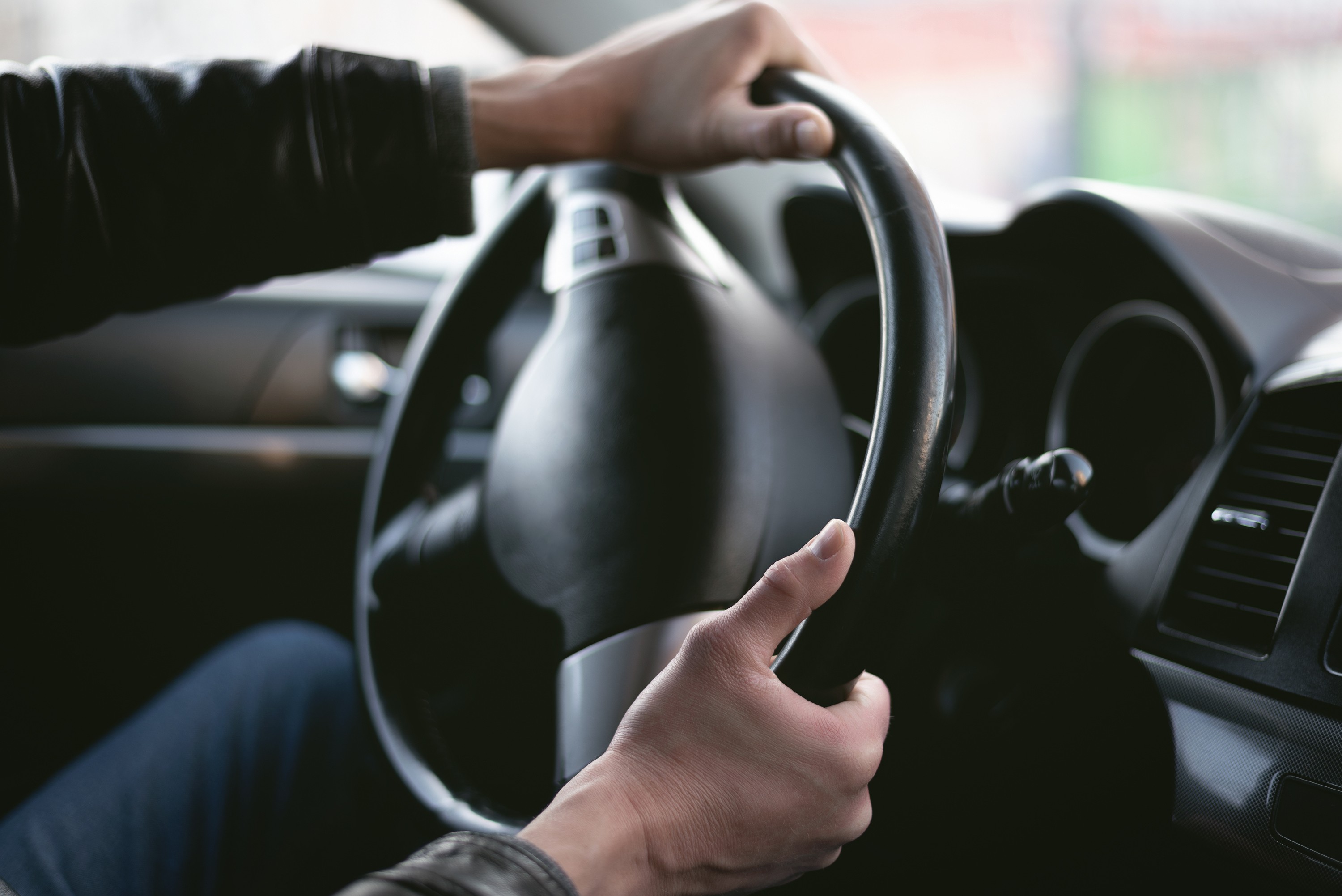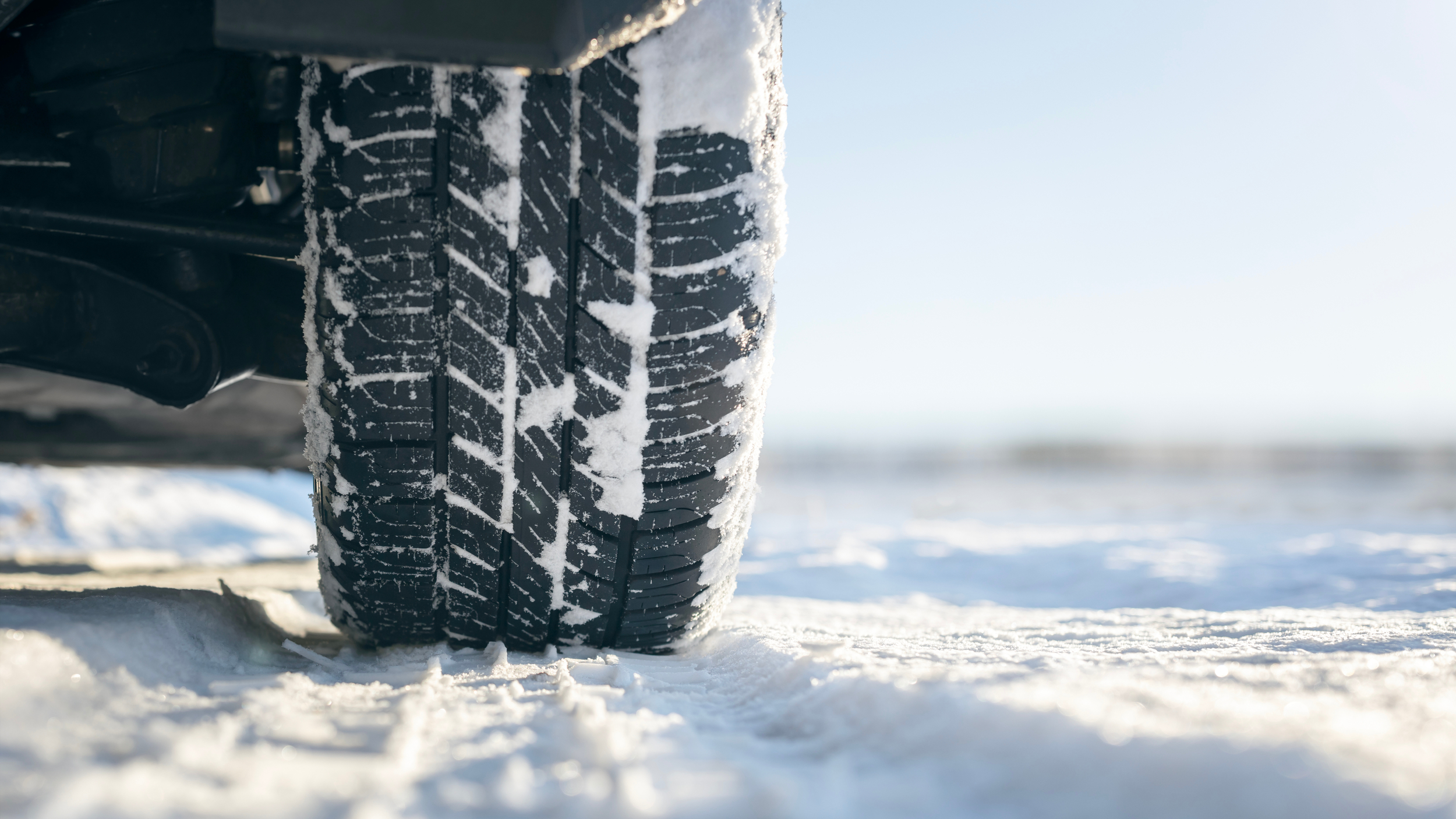Driving in winter can be tough, no matter how much experience you have. Snow, ice, rain, and floods can make it tricky to drive safely. Ahead of winter, you need to get your car ready to handle these conditions and avoid problems. This guide is here to help you stay safe when driving during winter weather conditions. Keep reading for tips on how to take care of your car, and how to deal with driving in certain weather conditions:
Car maintenance checklist
- Check your car’s fluid levels: Your car must be parked on level ground with the ignition switched off and when the engine is cold. Check your coolant, oil and screenwash levels, and top up if needed.
- Make sure your tyres are safe: Check that all four tyres are correctly inflated. If in doubt, check your owner’s handbook for correct tyre pressures. Also, inspect them for damage and look at the tread depth. Legally, the tread depth must be at least 1.6mm, but for peace of mind, 3mm is recommended. You can find out more about this through our Scheme partner, Kwik Fit.
- Check your car’s wipers: Clear visibility is crucial, especially during challenging driving conditions in winter. Ensure your front and rear wipers work well and clean your windscreen properly.
- Check your lights: Just as it’s important to be able to see out of your car, it’s also crucial that other vehicles can see you. Check your headlights, side lights, fog lights, and rear lights are all working. If you cannot test them all yourself, ask a friend or family member to help you.
- Make sure your car battery is in good condition: It’s helpful to know what the battery charge warning light looks like on your car’s dashboard to catch issues early. Develop habits like going for regular drives to keep the battery charged, as this is known to help your battery during winter. Also, ensure your car lights are off when parked to avoid leaving them on overnight.
- Plan your journey: If possible, avoid driving in extreme weather. If you must drive, plan a safe route beforehand, avoiding smaller roads that might flood in heavy rain.
- Top up with fuel or charge up: The last thing you want to do is run out of fuel or charge in foul weather. So, always ensure you have enough petrol or diesel in your car before heading off. If you drive an electric vehicle (EV), remember to leave home with enough charge. If you have a long journey ahead, make the most of public chargepoints along the way to keep a healthy range.
- Take your time: Try to not leave it until the last minute to set off for your journey when the weather conditions are poor. Set off early to avoid unnecessary stress. Do not put yourself and other road users in danger because you’re in a rush.
- Winter weather kit: If you’re travelling in severe weather like heavy snow, have a back-up kit in your car. Include essentials like an ice scraper, de-icer spray, blanket, flashlight, shovel, high visibility jacket, and waterproof clothing. Also, make sure your phone is charged, carry a warning triangle, and bring water, food, and any necessary medications.
Packing a winter weather kit is one of the best ways to avoid driving anxiety over the colder months. Read some more top tips to help you stay calm while driving this winter.
Turn your lights on
Switch on your dipped headlights. Visibility is reduced in heavy rain, so you need to make sure that other road users can see you approaching.
Slow down and keep your distance
Drive slowly in wet weather to increase your braking distance. It takes double the time for your car to stop in wet weather compared to when the roads are dry.
Keep a safe distance between you and other cars. Stay at least three seconds behind any vehicle in front of you. Ideally, this should be increased to four seconds in poor weather.
Keep windows clear
Humidity can cause your car windows to steam up on the inside. If you have air conditioning in your car, use this to demist your windows before driving. You can also turn up the heater to blow warm air on the windscreen. If your car has a demisting feature in its climate control, use it.
Avoid cruise control
Cruise control is a great feature for your car, but it should not be used in wet weather as it increases your chance of sliding. If your car starts aquaplaning when cruise control is on, you cannot slow down as quickly because your vehicle is going at a constant speed, making the situation even worse. You can learn more about aquaplaning and how to avoid it on the RAC website.
Be aware of pedestrians and cyclists
Be extra cautious of pedestrians and vulnerable road users such as cyclists, so you’re not caught out by any unexpected movements. For instance, cyclists may swerve to avoid a deep puddle when overtaking. Make sure you give them lots of room and try not to splatter them with even more water.
Watch out for flooding
If the rain is heavy and there’s flooding, be cautious of large puddles and standing water, as they may be deeper than you think. If in doubt, turn back. If your car’s engine cuts out after driving through deep water, do not attempt to restart it, as it may cause serious engine damage. Instead, turn on your hazard warning lights and seek assistance from RAC Motability Assist. You can quickly report your breakdown online or through the myRAC app.
Tips for driving in snow and ice
Maximise your visibility
Whether it’s frost or snow, you should leave time before you set off to clear it from your windscreen, side windows and rear screen using an ice scraper.
De-icer can help if the frost is hard, but do not be tempted to use boiling water to melt ice because it could crack or severely weaken your windscreen.
Removing snow from your car’s roof is also wise, as it can slide down onto your windscreen or into the path of the following traffic.
Stick to the main roads
Avoid smaller roads because main roads are more likely to have been treated with salt and grit. There’s also a greater chance that the snow will have broken up on main roads because of a greater traffic volume.
Drive carefully and sensibly
Follow the speed limit, brake gently and approach bends slowly. Brake well in advance of bends to prevent you from locking your wheels, and drive slowly in a low gear when going downhill. Avoid high revs when driving a manual car to prevent skidding and maximise control. Start off in second gear if it’s slippery, as this will also help reduce wheel slip.
Increase your stopping distance
Leave plenty of space between you and the car in front. According to the Highway Code, your braking distance could be ten times higher than on a dry road. In other words, travelling at 70mph on an icy road could take up to 771m to stop your car. That’s the equivalent of half a mile.
Regain control of your car
If your vehicle starts sliding sideways, take your foot off the pedals and steer into the skid (for example, if you start skidding to the left, you should steer to the left and try to avoid braking). Only use the brake if you can’t steer out of trouble.
If you get stuck, don’t spin the wheels or rev the engine, you’ll only dig your vehicle further in. Use as high a gear as possible and slowly manoeuvre the car forwards and backwards to creep out gently.
Tips for driving in fog
Use the correct lights
Always use dipped headlights in foggy conditions. Switch on your front and rear fog lights if visibility is less than 100 metres to help other motorists see you.
Do not turn on your rear fog lights any earlier than you need to, because you could end up dazzling drivers behind you. Do not use full beam because the fog reflects the light back, reducing visibility even further.
Driving tips for foggy conditions
Maintain a slow, steady pace, keep your distance from other motorists and avoid sudden braking.
Be aware of other road users and pedestrians who may not be visible straight away. If the visibility is too poor, park somewhere safe until it’s clear enough to continue your journey.
Tips for driving in strong winds
Plan your journey carefully
Avoid exposed roads and try to find a sheltered route without bridges, flyovers and high, flat land.
Reduce your speed
High winds can be dangerous. A sudden gust can unsettle your car, or there may be fallen trees, branches, and other flying debris. Driving slowly gives you more chances to be aware of your surroundings and spot if there is trouble ahead.
Stay in control
Make sure you keep a firm hold of the steering wheel at all times because you will need to react quickly if your vehicle is knocked off course. Be especially cautious when overtaking high-sided vehicles on dual carriageways and motorways.
Avoid towing
If possible, don’t tow caravans or trailers in gale-force winds. Even blustery winds can contribute to snaking (when the caravan swings from side-to-side). If the wind picks up, you should slow down, steer a straight course, and consider taking a break until the weather improves.
Leave lots of space
Sudden gusts can catch us all out, so leave extra room for cyclists and motorcyclists. These people can be vulnerable and may veer across the road.
Tips on how to get out of a skid
By following all the above guidance, you should reduce your risk of getting into a skid whilst driving this winter. However, it’s wise to be ready. Therefore, if you ever encounter a skid while driving, follow these steps to regain control:
Try not to panic
We know it’s easier said than done, but you should stay calm if your car skids. Panicking could delay you trying to regain control of your car.
Release the brake pedal
If you find yourself skidding, you may be able to remove the cause if you fully release the brake pedal or ease off the accelerator.
Steer to level out
Turn the steering wheel in the direction of the skid. If your car is steering right, then you should steer to the right. If you find your car skidding to the left, you should steer left. Once you feel the car levelling out, you should be able to straighten your steering and gain control.
Anti-lock Braking System (ABS)
If your car has anti-lock brakes, you will have guidelines on how to use this in your vehicle handbook. If you find yourself skidding in an emergency, you should firmly apply the footbrake and maintain pressure until the car slows down. The ABS should help you get control of the steering again. However, do not assume this will stop at a shorter distance and always try to react quickly and sensibly in these situations.
Advice on how to respond to skidding while driving can be found on the Highway Code website.
All-inclusive with the Motability Scheme
The Motability Scheme offers an all-inclusive package. If you are in receipt of a qualifying mobility allowance you can use it to lease a car, scooter, powered wheelchair or Wheelchair Accessible Vehicle. The Scheme provides flexible and hassle-free access to a brand new, reliable vehicle of your choice. As well as a great choice of cars, we also provide a wide range of Wheelchair Accessible Vehicles, scooters and powered wheelchairs.
Good to know
If you are a Motability Scheme customer, you should report any damage to your vehicle, big or small, to our insurance provider. They will be able to assess the damage and inform you if it needs repairing or if it can wait until the end of your lease. Remember that your Motability Scheme lease is all-inclusive, which means that all servicing, maintenance, and breakdown assistance are covered by your lease.
See what’s covered in your car lease
Related articles
How to avoid driving anxiety this winter
How to avoid your car skidding while driving – and what to do if it does
How to drive safely in frosty conditions
![]()
